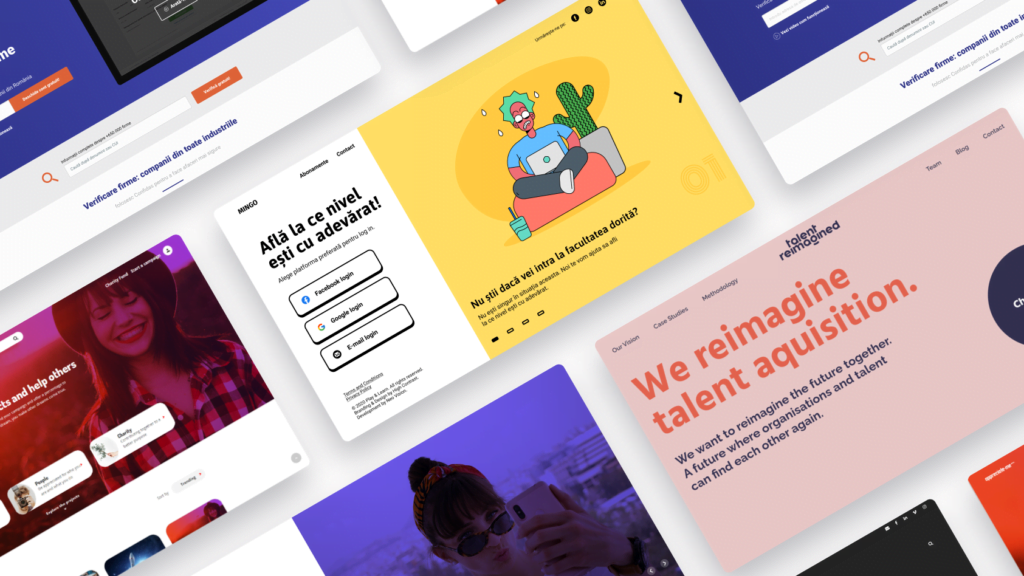How to Speak the Same Language as Your Software Development Team
Yesterday we had a staff meeting that involved our entire software development and project management team. We asked ourselves: “How can we bring more value to our clients?”.
The answer was: “Do not let them make mistakes.” Simple, right? But how are we supposed to do that? How could we control that?
We wrote a list of the most common mistakes our clients made or are currently making when communicating with us. Our purpose was to identify them and be one step ahead to prevent their mistake.
I will discuss common mistakes when communicating with a Web Agency. It is easier to prevent than correct an error, and if they are brought to your attention, it will help you and the tech agency.
Sending a text in a photo
Some of our clients find it easier to send a photo of a text rather than copying it and sending it via text. It may be easier, but we are the ones who have to do the transcript. Sometimes a handwritten note is time-consuming because we need to understand what you wrote.
Let’s save time and send texts via email. We all win.
Not telling us all of the desired features
Why is this an issue? We should always be able to add features, right?
Sure, but we aim to be the most efficient.
Here is a case study. Client **Blue** told us they wanted to build a website where they could give feedback to their colleagues. Based on the planning we did together and their budget, we made a pristine architecture that absolutely flows. We delivered it. After testing it, they remembered they wanted to crosscheck some of the feedback to establish some statistics. There goes our flowy architecture!
We talked with them, and yes, whatever the client needs can generally be done. After all, this is the virtual world. But there’s a catch. Their statistics page would have a poor loading time because the website’s architecture wasn’t designed for that. To have a competitive loading time, we needed to change the website’s architecture and re-write some of the code.
This did not make their hearts glow with joy. Extra code means extra time and costs they didn’t take into consideration. Do tell us about the essential features from the beginning. It allows us to plan the project differently and deliver it accordingly. **Blue** would have saved a lot of money this way.
I’ll do my own design!
We encourage you to be proactive, come up with ideas, research the competition, and suggest designs you like. But it’s a big difference between enjoying a design and creating one for a development company.
Many of our clients tried to do just that. They would combine two to three designs from similar platforms and create something new to save money. Sure, do it if you are a designer. Otherwise, let the pros do it.
You will likely miss many points if you are just looking for your favorite color and the perfect curves on your website. Design is an honorable job. No, we don’t keep them around just because they are cute and bubbly people. They know how to think in terms of user experience (UX). They know where to draw the eye, for example, on your phone number or that “please subscribe” call-to-action. They also know how to make your visit to the platform reach their goal in as few clicks as possible. You might miss these things when you get swept off your feet by that perfect rust-meets-denim color palette.
When clients did the design, we always had the following problems:
- Design delivered on a piece of paper. That’s a sketch, not an actual design. We don’t know how it’s supposed to look and work.
- We can’t extract elements and establish fonts and pixels from a design made on paper.
- No responsive design for mobile devices. We always had to improvise on these resolutions.
- There is no consistency if you combine the design from different platforms.
- The client does not consider the entire subtlety of the user interface (UI) and user experience (UX).
A professional knows how to create and deliver a design that will help us implement your product faster and better. You will pay more for the design but save money on development.
Providing feedback
No, giving feedback is absolutely not a mistake. It will always be the normal flow of a project to validate work.
Different people express their thoughts differently and write them differently. A common mistake is providing feedback in a document where five to ten people chaotically write broad opinions that are not even on the same page.
Client **Purple** offered us feedback in a shared document. Seven people gave their very conflicting opinions on how we should change it. Different temperaments mean some were certain of what they wanted, others gave mere suggestions, and others “don’t know how to put it. It’s more of a general feeling”. Half of them probably hadn’t been to all the meetings but were happy to give their input. We started reading the paper, and we understood roughly half of it. Some wanted new features, and some didn’t know about specific components that had been discussed. They were arguing about features. It was more like an internal document, a first draft of the feedback they needed to go over in further meetings.
It’s great to have feedback from as many people as you can. Throughout the project, we also enlist an army of feedbackers to ensure the website runs smoothly. I once had my grandmother review my work just to ensure it was intuitive and easy on the eyes. Just. don’t. take. us. through. it. Have one person collect all the feedback in one document that makes sense. Go through the final verdict. Make sure there is a conclusion to the document.
**Purple** did precisely that, and things ran smoothly afterward.
Setting deadlines on your own
**Green** was trying to impress an investor, thinking they would most likely invest in their company if they made up a shorter deadline on the spot.
The problem is the deadline was utterly unrealistic. It required from 50 to 200% more time to implement. Actually, **Green** is not a single client. It’s a “let’s rush the development team” fairy that pops up now and again to play pranks on us.
The first time this happened, we tried to reach an impossible deadline. We even added a new developer to the project. The feature the fairy requested was there, but it had a lot of bugs. The design was not great, and the whole app’s loading time gave you extra time to take your clothes out of the dryer and fold them neatly. We delivered, but it was a failure. No need to say that the investor wasn’t happy; neither was the client. We decided to take on the task and explain the whole situation to the investor as one last “Hail Mary!”, The investor was a smart guy with some tech background, so he allowed us to do another build. He withheld part of the investment for the end of the project. After this experience, we decided this was not really our work style. We give our software the proper time to brew. We were lucky to have an intelligent investor on the other side of the desk. Other stories received zero money from investors, as they believed the team was trying to scam them.
So, let’s jump to conclusions, so to speak:
- Send a text via email, don’t send pictures. You will save us a lot of time.
- Tell us everything you want to build on your platform. We make technical decisions based on that. It will most likely be more expensive to build it at the end of the development cycle than during.
- Let a designer help you. He’s a real asset. He knows what we need to get the job done.
- Don’t have more people communicating with the agency. Choose one and send your entire team feedback in a centralized document. It will help us have a larger view of what you want to implement, and we’ll make better decisions.
- Think of us as a lawyer. We need to know everything. Set deadlines with us, don’t do it behind our backs. Don’t drop the deadline bomb on us after you’ve made all the promises and pinky-swore on our behalf. We may be unable to help you, and you may miss your deadline.
I sincerely hope this will help you better communicate with your agency and help you deliver better digital products to your clients. And, no hard feelings if you made any of the abovementioned mistakes. Everybody learns! Hopefully, from the mistakes of others because nobody can do everything on their own.
If you want our input on any of your digital projects, feel free to book a free strategy call with Teo, Neo Vision’s COO.
👉 Make sure to check out our Digital Arbiters Facebook Group https://www.facebook.com/groups/digitalarbiters…
🐦Reach out and check our work: https://neovision.dev
BLOG ➜ https://neovision.dev/blog/
TWITTER ➜ https://twitter.com/neovisiondev
FACEBOOK ➜ https://www.facebook.com/NeoVisionDev
LINKEDIN ➜ www.linkedin.com/in/teodor-bara
LINKEDIN GROUP ➜ https://www.linkedin.com/groups/12527…
SUBSCRIBE ➜ https://bit.ly/3aIVdOA





